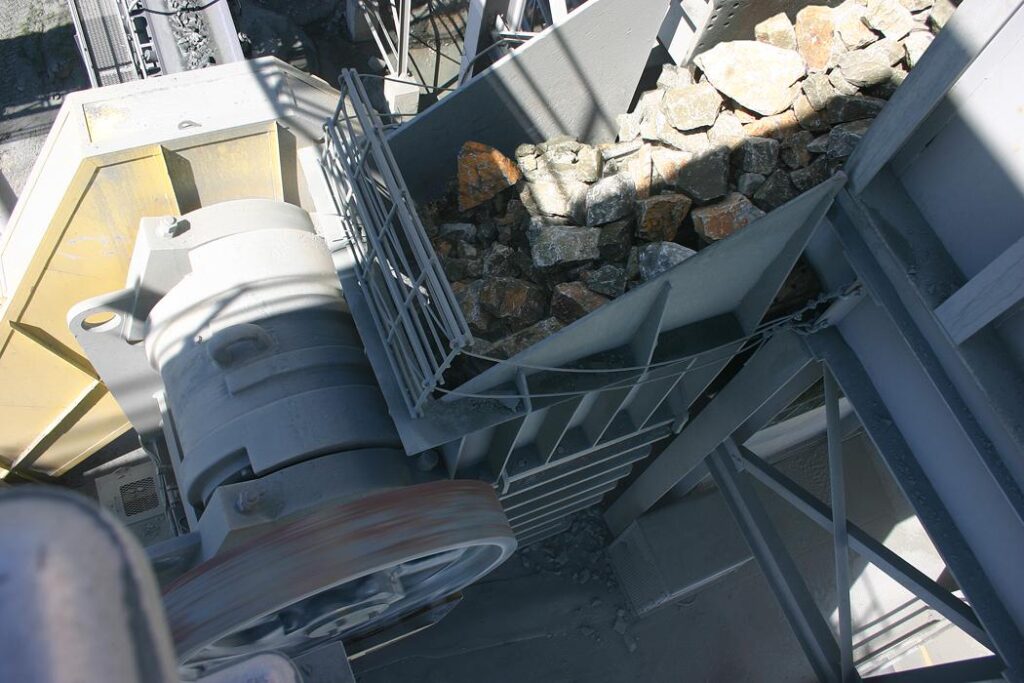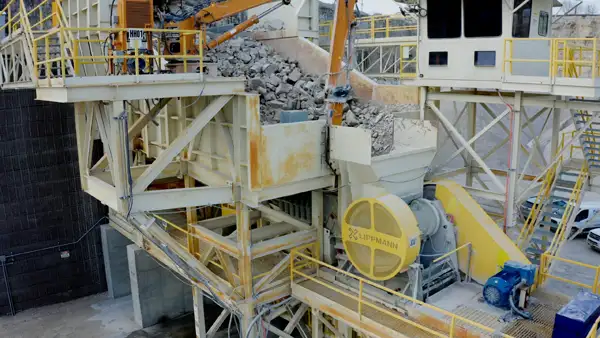
Fundamentals of Bare Jaw Crushers
Are you looking to add a crusher to your existing system? Maybe you want to customize one or two for specific projects. The bare jaw is the perfect place to start. Let’s begin with learning the fundamentals of bare jaw crushers.
A bare jaw crusher is perfectly named – it is literally a jaw crusher that is bare You’re buying the basic crushing machine.
These crushers are often used for primary crushing jobs in mining and aggregate environments. When it comes to simple, durable, and cost-effective crushers, bare jaws lead the way.
Let’s dig into how it works.
Staying true to its simple nature, the bare jaw works to break down large pieces of material into smaller, more manageable sizes by using straightforward compression.
It starts with raw material being fed into the top of the crusher through a hopper or directly into a feeder. There are two jaws, one that moves and one that doesn’t. The movable jaw moves in a sweeping motion towards the fixed jaw, creating a crushing chamber. This is where the gap between the jaws gets smaller, and the material is gradually crushed.
The jaw that moves is driven by a crank connected to the flywheel. As the jaw rotates, it creates a back-and-forth motion, causing the jaw to press against the material and crush it between the two jaws.
When the material is crushed to a smaller size, it leaves the crusher through the bottom. Depending on the size of the gap between the jaws, the dimensions produced vary.
Check out some bare jaw crusher details for the mining and aggregate industries:
- The bare jaw easily crushes hard, abrasive rocks like granite and iron ore.
- It is designed to handle large feed sizes and bust out multiple tons per hour.
- This crusher is built with reinforced frames and heavy-duty strength to withstand the unforgiving mining conditions.
- The bare jaw is used in quarries, sand, and gravel operations to process materials like limestone and basalt.
- It was created for moderate to high production rates when working with less abrasive materials than those in the mining industry.
- These bare jaws are often combined into stationary or mobile crushing plants when crushing aggregates.
Since we opened our doors in 1923, the legendary Lippmann bare jaw crushers have defined the fundamentals of bare jaw crushers by providing maximum strength, durability, and reliability at the lowest cost of ownership in the industry. We know a thing or two about how these machines work and would love to talk with you about your crushing needs! Find a dealer near you, and let’s kick off the conversation.
Bare Jaw 101: The Anatomy of the Crusher
- The fixed jaw stays put, providing the crushing surface.
- A moving jaw moves back and forth to crush the material.
- The toggle plate connects the moving jaw to the crusher frame, supplying motion to the crushing process.
- A flywheel balances the machine and provides momentum for the jaw’s motion.
- The crushing chamber is the space between the jaws where material is crushed.

Advantages of Bare Jaw Crushers
- All-around versatility. It can be tailored to your specific requirements by incorporating different motors, stands, and feeders.
- Heavy-duty construction. Especially for mining-grade units, these machines are built to work through all of it.
- Simple maintenance and less downtime. With fewer moving parts than complex crushing equipment, fewer parts need to be maintained, and there can be less downtime due to repairs.
